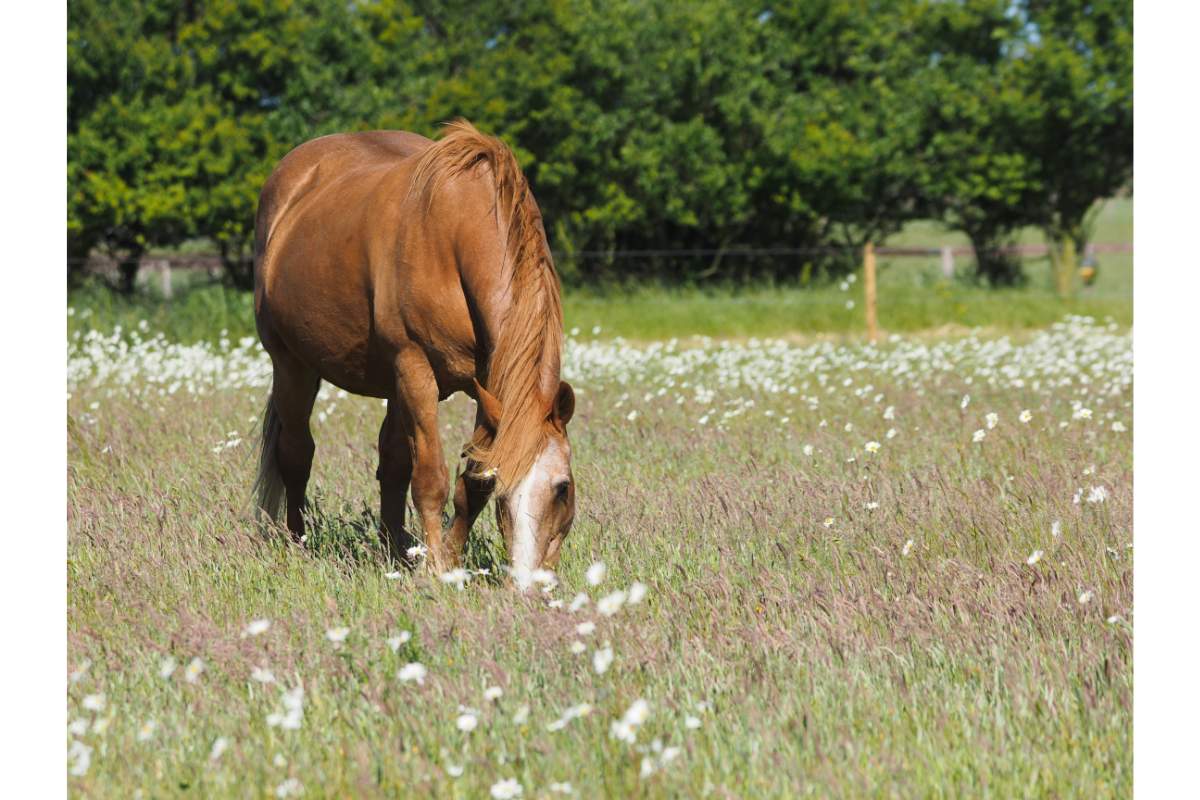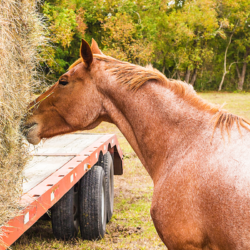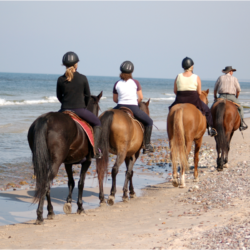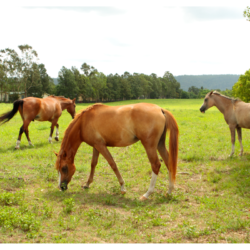Cushing’s syndrome, also known as Pituitary Pars Intermedia Dysfunction (PPID), is an endocrine disease that particularly affects older horses. It is caused by a hormonal imbalance that can seriously affect your horse’s health and quality of life.
What causes this disease?
Cushing’s syndrome is mainly due to a dysfunction of the hypothalamic-pituitary axis, which comprises two glands located at the base of the brain: the hypothalamus and the pituitary gland. In healthy horses, the hypothalamus controls the production of pituitary hormones through the secretion of dopamine. However, over time, the hypothalamus can degenerate, reducing dopamine production. This deficiency causes the pituitary gland to enlarge, increasing the secretion of a hormone called ACTH.
ACTH stimulates the adrenal glands to produce cortisol, a stress hormone. Excessive cortisol production disrupts various metabolic processes, including the management of glucose, proteins and lipids, as well as the regulation of immunity and circadian rhythms. The resulting hormonal imbalance causes the characteristic symptoms of Cushing’s syndrome.
Older horses are more likely to develop the condition due to premature ageing of the hypothalamus. Although all breeds of horse can be affected, some, such as ponies and Morgan horses, appear to be more at risk.
What are the symptoms of Cushing’s syndrome?
The symptoms of Cushing’s syndrome in horses are varied and can appear gradually, making early diagnosis difficult. At an advanced stage, the clinical signs are often more obvious. The main symptoms are
Dermatological signs
- Hirsutism: An abnormally long and sometimes curly coat, persisting whatever the season, is one of the most characteristic symptoms. Delayed or incomplete moulting may also be observed.
- Excessive sweating: Even after shearing, some horses continue to sweat profusely.
- Discolouration of the hair: Less frequent, this discolouration can appear on certain parts of the body.
Locomotor signs
- Laminitis: Recurrent episodes of laminitis are common and can seriously affect locomotion.
- Muscle wasting: Visible especially on the back line, this muscle wasting can be confused with normal ageing.
- Abnormal fat distribution: Accumulation of fat around salt shakers, the bun, above the tail and in the perineal area.
General signs
- Lethargy: A noticeable drop in performance and listless behaviour.
- Polyuro-polydipsia (PUPD): Increased water consumption and urine output.
- Reduced immunity: More frequent opportunistic infections, delayed wound healing.
These symptoms can be confused with those of normal ageing, which is why it is so important to consult a vet for a precise diagnosis.
How is the diagnosis made?
Diagnosis of Cushing’s syndrome often begins with clinical observation of the characteristic signs. If these symptoms are present, a vet will carry out a blood test for ACTH. In affected horses, ACTH levels are generally high. However, this level can vary depending on the time of day and the year, sometimes requiring additional tests to confirm the diagnosis.
Additional tests include the dexamethasone suppression test and the TRH stimulation test. These tests compare ACTH levels before and after the injection of dexamethasone or TRH. These methods make it possible to assess the response of the pituitary gland and refine the diagnosis.
Regular monitoring is essential, especially in older horses, to detect the disease at an early stage and improve quality of life through appropriate management.
What treatments are available?
The treatment of choice for Cushing’s syndrome is pergolide (PrascendNDV). This molecule mimics the effect of dopamine, thereby regulating the production of ACTH by the pituitary gland. Pergolide is administered orally on a daily basis. This treatment does not cure the disease, but it considerably improves quality of life by reducing clinical symptoms.
Regular veterinary monitoring is crucial to adjust the dose of pergolide to the specific needs of each horse. Side effects, although rare, may include loss of appetite, which should be reported to the vet.
In addition to pergolide, it is important to maintain a clean and suitable environment to prevent infections and other complications. Careful monitoring of teeth and feet and proper management of feed are essential for the horse’s well-being.
How should a horse with Cushing’s syndrome be managed?
Cushing ‘s syndrome can be prevented by regular care and careful management of the horse’s environment. Here are some key measures:
- Regular worming and coproscopic monitoring to prevent parasitic infestations.
- Dental care and farriery: Essential to prevent dental and hoof infections.
- Frequent vaccinations: Increase the frequency of boosters to compensate for the weakened immune response.
- Feed management: Limit energy intake, favour low-energy forage and avoid starchy concentrates.
Summer shearing can improve thermal comfort and prevent skin infections. Finally, ensure regular veterinary check-ups to detect any abnormalities early on and adjust care accordingly.





